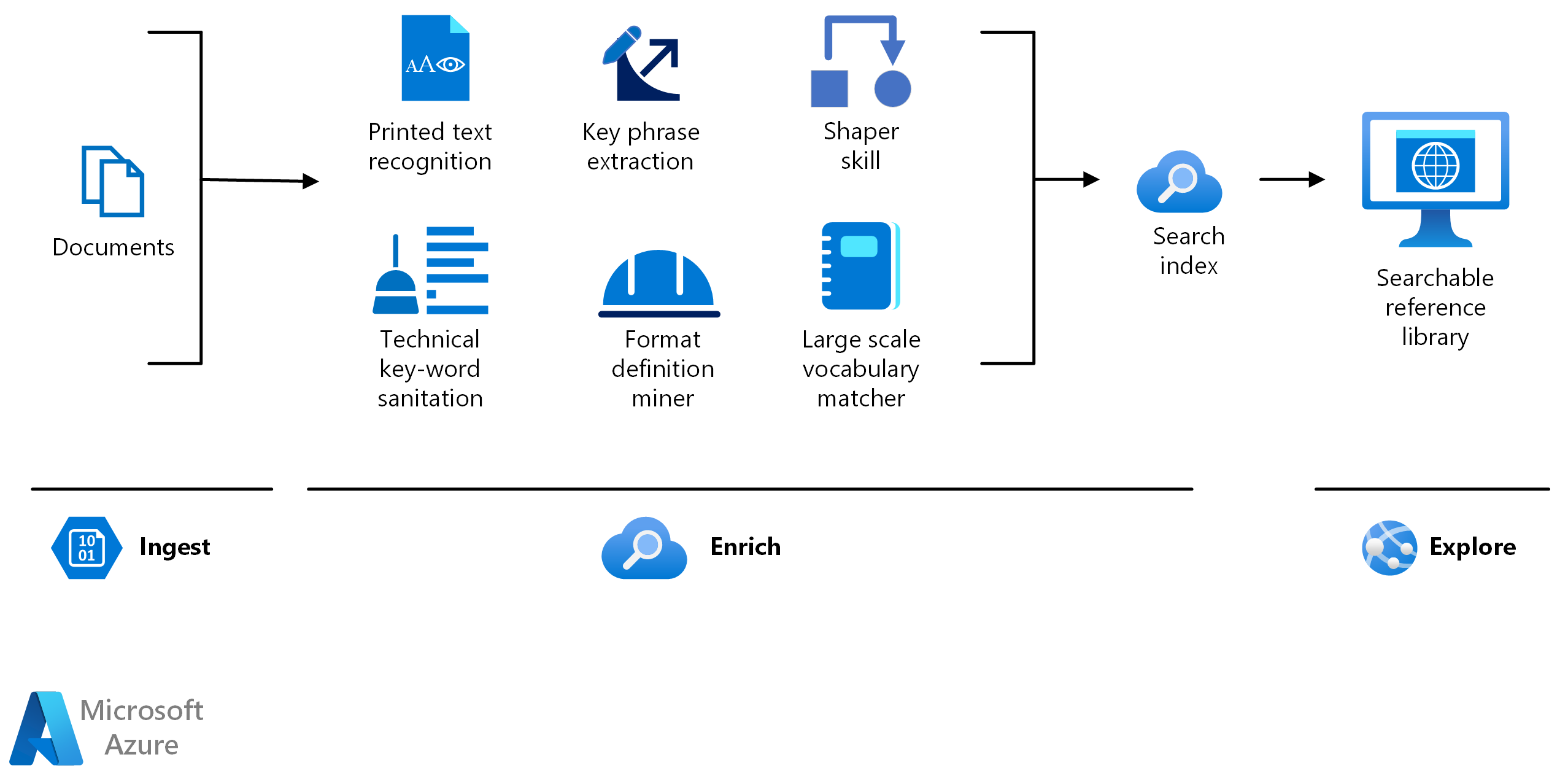Solution ideas
This article is a solution idea. If you'd like us to expand the content with more information, such as potential use cases, alternative services, implementation considerations, or pricing guidance, let us know by providing GitHub feedback.
This article describes how to use knowledge mining technologies like key phrase extraction and entity recognition to quickly review dense technical material.
Architecture
There are three steps in knowledge mining: ingest, enrich, and explore.
Download a Visio file of this architecture.
Dataflow
Ingest
The ingest step aggregates content from a range of sources, including structured and unstructured data. For content research, you can ingest different types of technical content like product manuals, user guides, engineering standard documents, patent records, medical journals, and pharmaceutical fillings.
Enrich
The enrich step uses AI capabilities to extract information, find patterns, and deepen understanding. Enrich your content using optical character recognition, key phrase extraction, entity recognition, and language translation. Use custom models to extract industry-specific terms such as product names or engineering standards, to flag potential risks or other essential information, or for HIPAA compliance.
Explore
The explore step is exploring data via search, bots, applications, and data visualizations. For example, you can integrate the search index Azure Cognitive Search into a searchable directory or an existing business application.
Components
The following key technologies are used to implement tools for technical content review and research:
- Azure Cognitive Search is a cloud search service that supplies infrastructure, APIs, and tools for searching. You can use Azure Cognitive Search to build search experiences over private, heterogeneous content in web, mobile, and enterprise applications.
- The web API custom skill interface is used to integrate a custom skill into an Azure Cognitive Search enrichment pipeline.
- Azure Cognitive Service for Language is part of Azure Cognitive Services that offers many natural language processing services. You can use these services to understand and analyze text.
- Text analytics is a collection of APIs and other features from Azure Cognitive Service for Language that you can use to extract, classify, and understand text within documents.
- Azure Cognitive Services Translator is part of the Cognitive Services family of REST APIs. You can use Translator for real-time document and text translation.
- Azure Form Recognizer is part of Azure Applied AI Services. Form Recognizer uses machine-learning models to extract key-value pairs, text, and tables from documents such as invoices, receipts, ID cards, and business cards.
Scenario details
This architecture shows how to use knowledge mining for content research.
Potential use cases
When organizations task employees to review and research technical data, it can be tedious to read page after page of dense text. Knowledge mining helps employees quickly review these dense materials. In industries where bidding competition is fierce, or when the diagnosis of a problem must be quick or in near real-time, companies can use knowledge mining to avoid costly mistakes and gain faster insights during content research.
Industries that rely on knowledge mining include:
- Education
- Marketing
- Banking (finance)
- Service providers
- Retail
- News and media
Next steps
Build and Azure Cognitive Search custom skill.
Explore the learning path Knowledge mining with Azure Cognitive Search.
To learn more about the components in this solution, see these resources:
